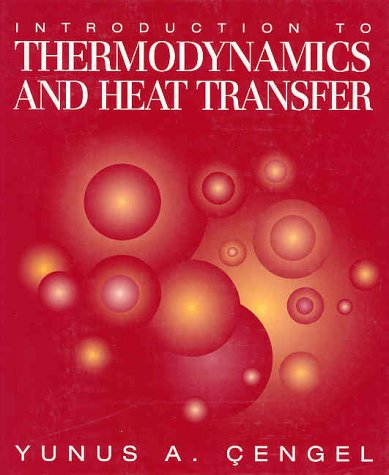Introduction To Thermodynamics Pdf
COURSE DESCRIPTIONThis course provides an introduction to the most powerful engineering principles you will ever learn - Thermodynamics: the science of transferring energy from one place or form to another place or form. We will introduce the tools you need to analyze energy systems from solar panels, to engines, to insulated coffee mugs. More specifically, we will cover the topics of mass and energy conservation principles; first law analysis of control mass and control volume systems; properties and behavior of pure substances; and applications to thermodynamic systems operating at steady state conditions.COURSE FORMATThe class consists of lecture videos, which average 8 to 12 minutes in length. The videos include integrated In-Video Quiz questions. There are also quizzes at the end of each section, which include problems to practice your analytical skills that are not part of video lectures.
- Bsc Physics Thermodynamics Notes Pdf
- Introduction To Thermodynamics Pdf
- Introduction To Thermodynamics Pdf Example

There are no exams.GRADING POLICYEach question is worth 1 point. A correct answer is worth +1 point. An incorrect answer is worth 0 points.
There is no partial credit. You can attempt each quiz up to three times every 8 hours, with an unlimited number of total attempts. The number of questions that need to be answered correctly to pass are displayed at the beginning of each quiz. In this module, we frame the context of energy and power supply and demand around the world.
You will learn that understanding and correctly using units are critical skills for successfully analyzing energy systems. It is also important to be able to identify and categorize systems as “open” or “closed” and “steady state” or “transient”. Thermodynamics is a topic that is very notation intense, but the notation is very helpful as a check on our assumptions and our mathematics.

Additionally, in this module we will refresh our understanding of some common thermodynamic properties. In this module, we introduce our first abstract concepts of thermodynamics properties – including the specific heats, internal energy, and enthalpy.
It will take some time for you to become familiar with what these properties represent and how we use these properties. For example, internal energy and enthalpy are related to temperature and pressure, but they are two distinct thermodynamic properties. One of the hardest concepts of thermodynamics is relating the independent thermodynamic properties to each other. We have to become experts at these state relations in order to be successful in our analysis of energy systems. There are several common approximations, including the ideal gas model, which we will use in this class. The key to determining thermodynamic properties is practice, practice, practice! What is a security awareness program charter. Do as many examples as you can.
Bsc Physics Thermodynamics Notes Pdf
In this module, we tackle some of the most difficult systems to analyze – transient or time-varying systems. Any system where the energy transfer changes as a function of time requires transient analysis.
Not only are these difficult problems to analyze, they are also difficult systems to design and interrogate. Some important transient problems include the start-up of a gas turbine or an internal combustion engine. Such transients are becoming more integral to the electrical power grid due to the introduction of more renewable power sources which are also more intermittent. These are very relevant and timely topics for the stationary power sector. In this module, we introduce some of the concepts of the Second Law of Thermodynamics.

Introduction To Thermodynamics Pdf
We will only discuss a small fraction of the vast material that falls under the topic of the Second Law. I encourage you to explore beyond our course material for very interesting discussions on the outcomes of the Second Law which include entropy, the absolute temperature scale and Carnot cycles. The most important aspect for our class, is that the Second Law provides a basis for defining the theoretical maximums and minimums for processes.
Using these limits, we can define device and system efficiencies. We demonstrate these limits with examples of basic power plants.
A good “take-home” exercise is to apply these limits to some of the devices and systems you see every day around you. In this module we focus on in-depth analysis of a Rankine power plant. The Rankine power plant is the fundamental design for stationary power generation when the working fluid is water (or steam) and the energy carrier is nuclear, coal, gas, or thermal solar power. We also learn that conventional power plants generate a lot of waste heat! Co-generation is a great way to use that waste heat. Can you think of a few ways you might capture waste heat and use it productively?
Introduction To Thermodynamics Pdf Example
Then you might have your next environmentally sustainable business venture!